How do you know if you’re ovulating? Learn more about ovulation symptoms and signs that might mean you’re in your fertile window.
-
Tracking cycle
-
Getting pregnant
-
Pregnancy
-
Help Center
-
Flo for Partners
-
Anonymous Mode
-
Flo app reviews
-
Flo Premium New
-
Secret Chats New
-
Symptom Checker New
-
Your cycle
-
Health 360°
-
Getting pregnant
-
Pregnancy
-
Being a mom
-
LGBTQ+
-
Quizzes
-
Ovulation calculator
-
hCG calculator
-
Pregnancy test calculator
-
Menstrual cycle calculator
-
Period calculator
-
Implantation calculator
-
Pregnancy weeks to months calculator
-
Pregnancy due date calculator
-
IVF and FET due date calculator
-
Due date calculator by ultrasound
-
Medical Affairs
-
Science & Research
-
Pass It On Project New
-
Privacy Portal
-
Press Center
-
Flo Accuracy
-
Careers
-
Contact Us
Ovulation symptoms and signs: How to tell when you’re ovulating
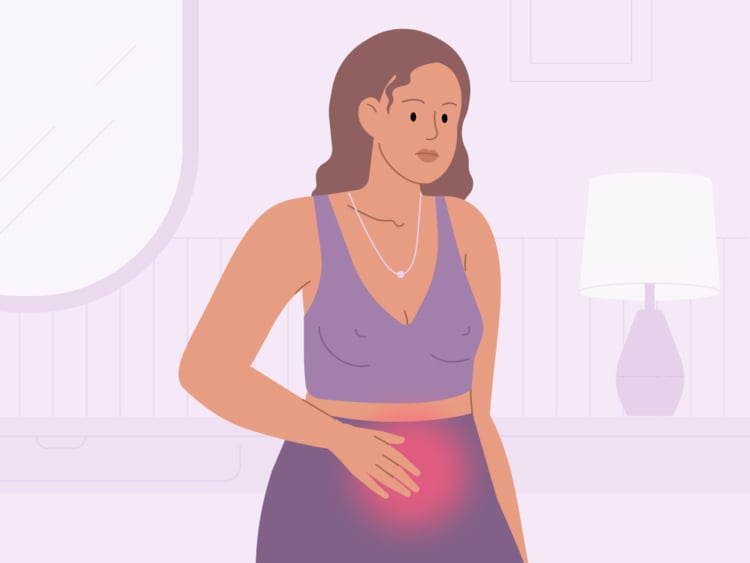

Every piece of content at Flo Health adheres to the highest editorial standards for language, style, and medical accuracy. To learn what we do to deliver the best health and lifestyle insights to you, check out our content review principles.
Whether you’re trying to conceive or simply want to understand your body better, learning about ovulation is a great place to start. Before we dive into how you can spot when you might be ovulating, it can be handy to know what it actually is.
Ovulation is the name given to the point in your cycle when one of your ovaries (either the left or the right) releases an egg. After this, the egg will travel through a fallopian tube, where it may or may not be fertilized by a sperm.
Often, this process happens in every cycle without you even noticing. But are there telltale signs and symptoms that your body might give you to hint that this is taking place? Read on to find out more.
Key takeaways
- Ovulation is a pretty big event in your menstrual cycle. It marks the moment when one of your ovaries releases an egg.
- There are a few signs that ovulation may have happened, including changes to your cervical mucus or discharge and very small changes to your temperature.
- You might be curious about how to track ovulation. While ovulation predictions shouldn’t be used for birth control, there are different ways you can build a better understanding of your cycle. These are known as ovulation tracking methods. They include using a period-tracking app like Flo, using paper or a calendar to write down your cycle dates, using an ovulation calculator, using ovulation predictor kits, or tracking your symptoms.
- It would be great if you could track your ovulation days like regular days of the week. However, you only need to ask a handful of your friends about their periods to know that everyone’s cycle is different, which means it’s rarely as straightforward as that. Everyone will experience different symptoms, so it can be useful to get a basic understanding of what’s typical for you.
Take a quiz
Find out what you can do with our Health Assistant
Possible ovulation signs
So, how do you know when you’re ovulating? Your body might guide you on figuring this out, as you might experience some telltale signs.
At this point, it’s so important to remember that no two people are the same, and each person will feel these symptoms at a different degree of intensity, if at all. Let’s take a closer look below.
Changes to your cervical mucus
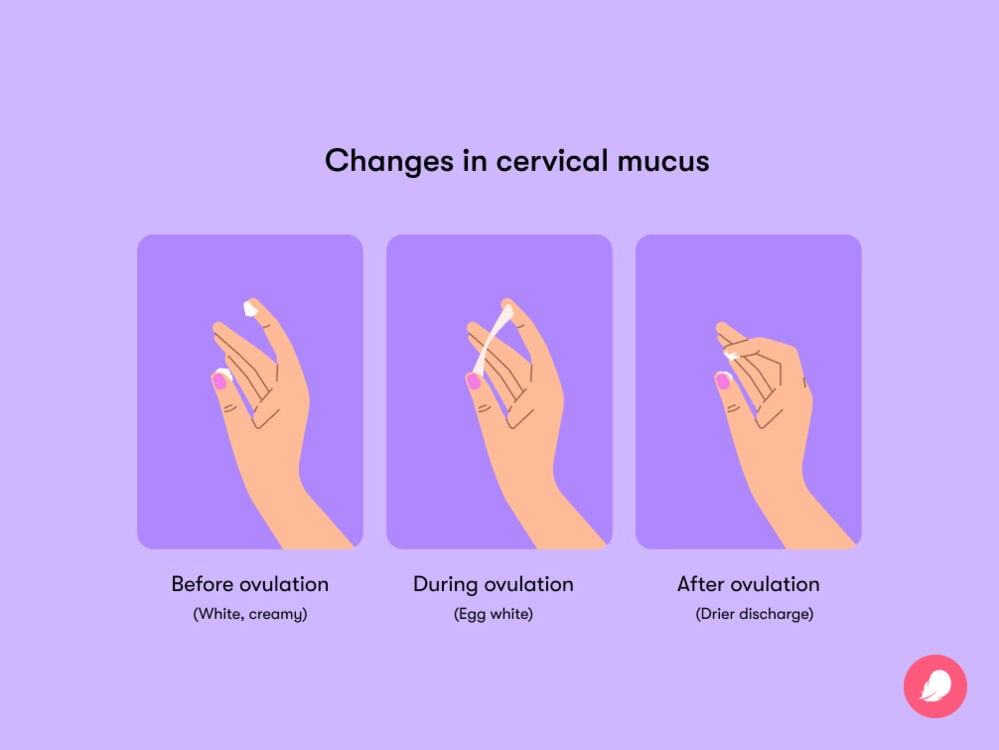
One sign that ovulation is happening soon is a change in your vaginal discharge (cervical mucus). This discharge may be different from what you might usually see in your underwear; it could be clear and have a thinner, more slippery consistency, similar to raw egg whites.
Rise in your basal body temperature (BBT)
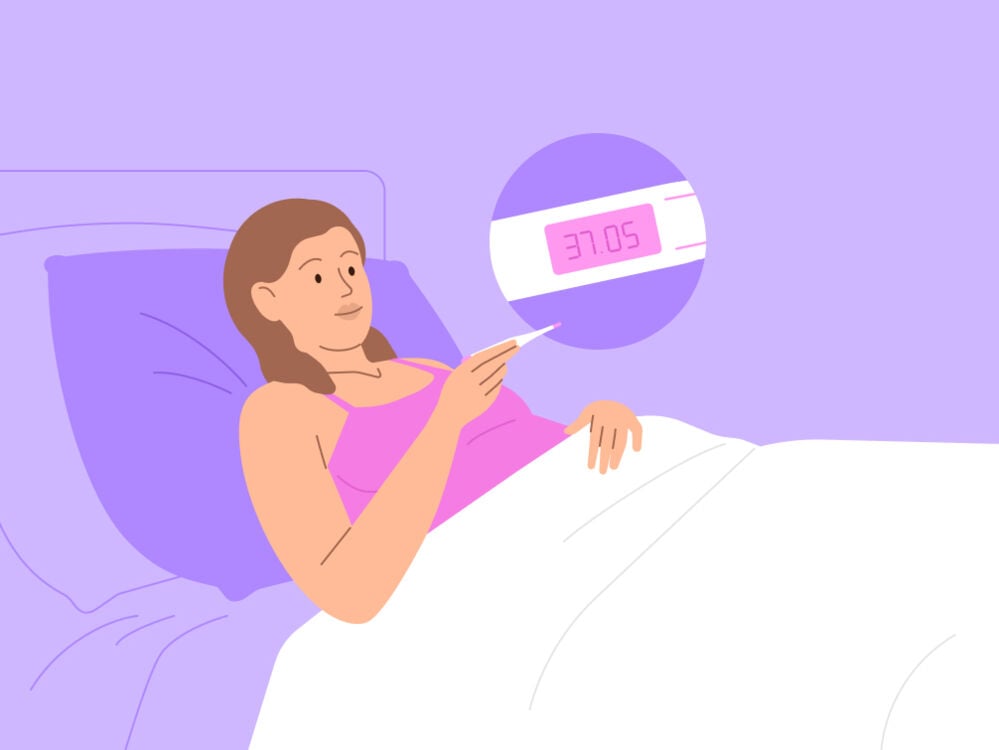
After ovulation, you might also experience a small rise in your basal body temperature. This is the temperature of your body when you’re resting. It may rise by around 0.5ºF (0.3ºC). We aren’t expecting you to notice this without a little help.
Even though the rise is small, you may be able to notice the change on a digital thermometer if you consistently track your temperature around the same time each day, preferably first thing in the morning. While this can help you understand where you are in your cycle, it’s important to note that this is not a recommended method of birth control or an accurate way to predict ovulation if you’re trying to get pregnant. Your temperature can be affected by a number of factors, and you only see the rise in temperature after ovulation has already occurred.
Changes to your cervix
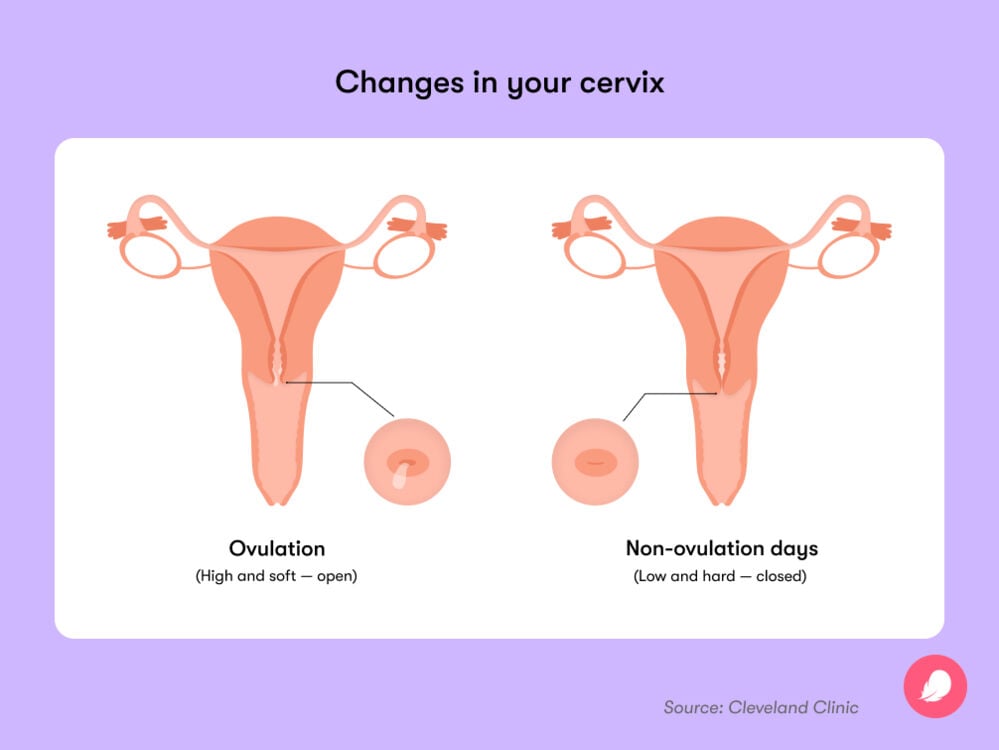
There are also some changes that happen to your cervix during ovulation. If you want to get to know your body better, then you can use your finger to check your cervix. Make sure you wash your hands, and then gently insert one of your fingers into your vagina until you feel your cervix. You’ll notice that during ovulation, it will be higher and feel soft. You’ll also notice that after ovulation is over, it becomes much harder again.
Examining your own cervix can be tricky, of course, so if you don’t notice much of a difference, don’t worry. Most people find it easier to observe changes in cervical mucus than changes in the texture and position of the cervix.
Possible ovulation symptoms
You can think of the three changes above as being the big signs that either you’re about to ovulate or you’ve just ovulated. However, some people report feeling different symptoms, which can mimic how you feel just before your period starts.
Breast soreness or tenderness
The rush of hormones before and during ovulation may mean your boobs feel tender or sore. It might feel like mild breast pain that’s barely noticeable to severe pain that makes it uncomfortable to wear tight clothing. Don’t suffer in silence if this is affecting your day-to-day life; be sure to reach out to your doctor to discuss any possible treatment options.
Light spotting
You might notice some spotting during ovulation. This is light bleeding between your periods that can appear as drops of blood in your underwear. Again, this generally isn’t a cause for concern, but if it lasts longer than a day or two or is particularly heavy, be sure to reach out to your doctor.
Bloating
Do you get bloated when you ovulate? You’re not alone. This is another typical symptom of ovulation, and it occurs due to the hormonal changes that are happening around this time. If it’s making you feel (understandably) uncomfortable, then staying hydrated and opting for smaller meals could help.
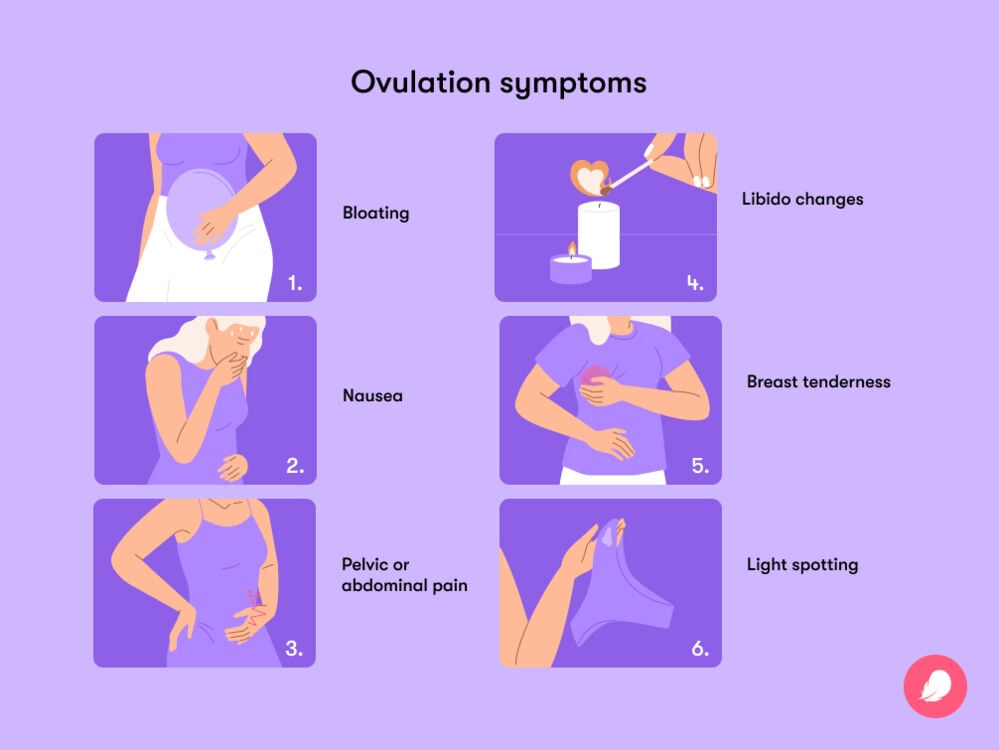
Cramps
It’s not a myth: You might feel a slight ovulation pain in the lower part of your abdomen at this point in your cycle. Remember that you’ll only feel this pain on one side, depending on which ovary has released an egg that month. Clever, right?
You might experience this ache, known as mittelschmerz (a German word that means “middle pain” or “pain in the middle of the month”), for a couple of minutes or even days. While this might be alarming, rest assured that ovulation pain is normal and should subside. If it doesn’t stop and painkillers don’t help, be sure to reach out to your doctor to make sure everything is OK.
Sex drive changes
Just before ovulation, there is a rise in the levels of a hormone called estrogen, and this can mean that you may start to feel more turned on than usual. Your sex drive might drop again after ovulation as the levels of estrogen decrease. This is totally normal, but it’s a symptom that not everyone experiences, so if it doesn’t happen to you, don’t be concerned.
Nausea
As if bloating, cramping, and breast soreness weren’t enough, the change in hormones during your menstrual cycle that causes ovulation pain can also cause some people to feel nauseous. If you’re affected by this, try heading outside for some fresh air or drinking peppermint or ginger tea.
What does ovulation feel like?
So, as you can see, ovulation can feel pretty different for everyone, and trying to predict when you’re ovulating based on symptoms alone can be tough.
Ovulation itself doesn’t feel like much. It’s likely that you may not even know it’s happening. However, some people report feeling ovulation pain, breast tenderness, and nausea around the time that they might be ovulating. This could be your body giving you a hint of what’s going on.
Signs ovulation might be over
Many of the signs mentioned above are signs that ovulation has already happened. While you might notice egg white discharge just before you ovulate, a change to your BBT only occurs afterward. This is why tracking ovulation to get pregnant can be really tricky. That’s without even considering early ovulation and the fact that you often don’t ovulate on exactly the same day each cycle.
Rather than predicting when you might ovulate based on symptoms alone, you can use a combination of different ovulation tracking methods such as:
- Tracking via the calendar method
- Using a cycle-tracking app like Flo
- Using ovulation predictor kits
- Monitoring your BBT every day
Find out more about ovulation tracking.
Understanding how your body might feel during ovulation
Whether it’s cramps and spotting or a heightened sex drive and extra energy, hormone fluctuations during your cycle can impact the way you feel in lots of weird and wonderful ways. And ovulation is a major time of hormonal change. It would be so handy to have a list of signs and symptoms so you could know for sure that you’ve ovulated. However, cycles aren’t so simple.
The reality is that your body might feel different from cycle to cycle. It can be hard to keep track of symptoms that you suspect might be related to ovulation by yourself. This is why it can be useful to use a period-tracking app like Flo. You can keep a note of your symptoms, better understand when you might be ovulating, and spot patterns in how you might be feeling. That way, you can feel more prepared and confident for what’s to come.
More frequently asked questions about ovulation symptoms
What is ovulation?
Ovulation is the name given to the point in your cycle when one of your ovaries releases a mature egg. Your body produces a hormone called luteinizing hormone (LH), which triggers this process. Once it’s been released, the egg will travel through a fallopian tube, where it may or may not be fertilized by a sperm.
When do people ovulate?
Generally speaking, you’ll ovulate around 14 days before your period arrives. That means that in a 28-day menstrual cycle, ovulation will happen somewhere around the 14th day. We count the first day of your period as the first day of your cycle.
But, as we know, the majority of people don’t have a 28-day cycle; in fact, a normal cycle can range from 21 to 35 days. So, ovulation could happen either earlier or later than the 14th day, depending on the length of your cycle. You can use Flo’s handy ovulation calculator to predict when ovulation might occur based on your own cycle dates.
How long does ovulation last?
Not long at all: The moment of ovulation itself is instant. Following this, the egg can survive for up to 24 hours. However, keep in mind that your fertile window (the time in your menstrual cycle when you’re most likely to get pregnant) is much longer than this. Peak fertility will be the day you ovulate, as well as the five days leading up to ovulation itself and the day after. Sperm can live in your body for up to five days!


Hey, I'm Anique
I started using Flo app to track my period and ovulation because we wanted to have a baby.


The Flo app helped me learn about my body and spot ovulation signs during our conception journey.


I vividly
remember the day
that we switched
Flo into
Pregnancy Mode — it was
such a special
moment.
Real stories, real results
Learn how the Flo app became an amazing cheerleader for us on our conception journey.
References
Aba, Marcelo A. “Anatomy and Physiology of Reproduction in the Female Llama and Alpaca.” Llama and Alpaca Care, edited by Christopher Cebra, et al. W.B. Saunders, 2013, pp. 140–50, DOI:10.1016/B978-1-4377-2352-6.00014-6.
“Ask the Sexpert: Sex Drive and the Menstrual Cycle.” University of Rochester, 25 Jan. 2023, www.rochester.edu/uhs/ask-the-sexpert-sex-drive-and-the-menstrual-cycle/.
“Basal Body Temperature for Natural Family Planning.” Mayo Clinic, 10 Feb. 2023, www.mayoclinic.org/tests-procedures/basal-body-temperature/about/pac-20393026.
“Bloating.” NHS, ww.nhs.uk/conditions/bloating/. Accessed 18 Oct. 2024.
“Breast Pain (Mastalgia).” Johns Hopkins Medicine, www.hopkinsmedicine.org/health/conditions-and-diseases/mastalgia-breast-pain. Accessed 18 Oct. 2024.
“Cervical Mucus.” Cleveland Clinic, my.clevelandclinic.org/health/body/21957-cervical-mucus. Accessed 18 Oct. 2024.
“Cervix.” Cleveland Clinic, my.clevelandclinic.org/health/body/23279-cervix. Accessed 18 Oct. 2024.
“Feeling Sick (Nausea).” NHS, www.nhs.uk/conditions/feeling-sick-nausea/. Accessed 18 Oct. 2024.
“Fertility Awareness-Based Methods of Family Planning.” The American College of Obstetricians and Gynecologists, Jan. 2019, www.acog.org/womens-health/faqs/fertility-awareness-based-methods-of-family-planning.
Grieger, Jessica A., and Robert J. Norman. “Menstrual Cycle Length and Patterns in a Global Cohort of Women Using a Mobile Phone App: Retrospective Cohort Study.” Journal of Medical Internet Research, vol. 22, no. 6, 24 June 2020, www.jmir.org/2020/6/e17109/.
“Luteinizing Hormone.” Cleveland Clinic, my.clevelandclinic.org/health/body/22255-luteinizing-hormone. Accessed 18 Oct. 2024.
“The Pituitary and Hypothalamus.” M.S.D. Manual Consumer Version, www.msdmanuals.com/home/multimedia/video/the-pituitary-and-hypothalamus. Accessed 18 Oct. 2024.
“Menstrual Cycle: What’s Normal, What’s Not.” Mayo Clinic, 22 Apr. 2023, www.mayoclinic.org/healthy-lifestyle/womens-health/in-depth/menstrual-cycle/art-20047186.
“Ovulation.” Cleveland Clinic, my.clevelandclinic.org/health/articles/23439-ovulation. Accessed 18 Oct. 2024.
“Ovulation Pain.” Cleveland Clinic, my.clevelandclinic.org/health/diseases/9134-ovulation-pain-mittelschmerz. Accessed 18 Oct. 2024.
“What Ovulation Signs Can I Watch for if I Want to Get Pregnant?” Mayo Clinic, 9 July 2024, www.mayoclinic.org/healthy-lifestyle/getting-pregnant/expert-answers/ovulation-signs/faq-20058000.
Wilcox, A. J., et al. “The Timing of the ‘Fertile Window’ in the Menstrual Cycle: Day Specific Estimates from a Prospective Study.” BMJ, vol. 321, no. 1259, 18 Nov. 2000, doi:10.1136/bmj.321.7271.1259.




